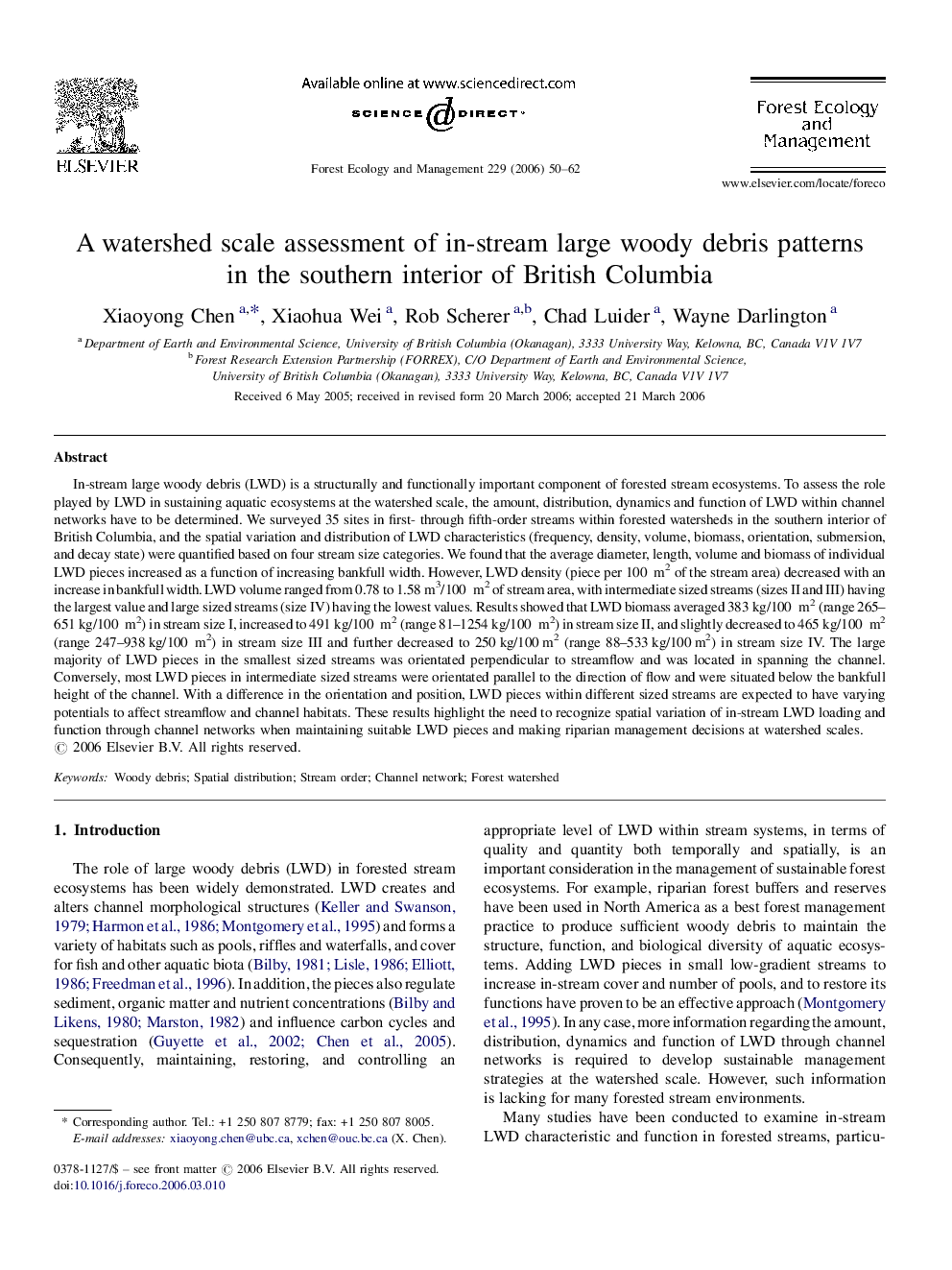| کد مقاله | کد نشریه | سال انتشار | مقاله انگلیسی | نسخه تمام متن |
|---|---|---|---|---|
| 90824 | 159403 | 2006 | 13 صفحه PDF | دانلود رایگان |

In-stream large woody debris (LWD) is a structurally and functionally important component of forested stream ecosystems. To assess the role played by LWD in sustaining aquatic ecosystems at the watershed scale, the amount, distribution, dynamics and function of LWD within channel networks have to be determined. We surveyed 35 sites in first- through fifth-order streams within forested watersheds in the southern interior of British Columbia, and the spatial variation and distribution of LWD characteristics (frequency, density, volume, biomass, orientation, submersion, and decay state) were quantified based on four stream size categories. We found that the average diameter, length, volume and biomass of individual LWD pieces increased as a function of increasing bankfull width. However, LWD density (piece per 100 m2 of the stream area) decreased with an increase in bankfull width. LWD volume ranged from 0.78 to 1.58 m3/100 m2 of stream area, with intermediate sized streams (sizes II and III) having the largest value and large sized streams (size IV) having the lowest values. Results showed that LWD biomass averaged 383 kg/100 m2 (range 265–651 kg/100 m2) in stream size I, increased to 491 kg/100 m2 (range 81–1254 kg/100 m2) in stream size II, and slightly decreased to 465 kg/100 m2 (range 247–938 kg/100 m2) in stream size III and further decreased to 250 kg/100 m2 (range 88–533 kg/100 m2) in stream size IV. The large majority of LWD pieces in the smallest sized streams was orientated perpendicular to streamflow and was located in spanning the channel. Conversely, most LWD pieces in intermediate sized streams were orientated parallel to the direction of flow and were situated below the bankfull height of the channel. With a difference in the orientation and position, LWD pieces within different sized streams are expected to have varying potentials to affect streamflow and channel habitats. These results highlight the need to recognize spatial variation of in-stream LWD loading and function through channel networks when maintaining suitable LWD pieces and making riparian management decisions at watershed scales.
Journal: Forest Ecology and Management - Volume 229, Issues 1–3, 1 July 2006, Pages 50–62